Related Research Articles

Aviation includes the activities surrounding mechanical flight and the aircraft industry. Aircraft includes fixed-wing and rotary-wing types, morphable wings, wing-less lifting bodies, as well as lighter-than-air craft such as hot air balloons and airships.

The Caproni Campini N.1, also known as the C.C.2, is an experimental jet aircraft built in the 1930s by Italian aircraft manufacturer Caproni. The N.1 first flew in 1940 and was briefly regarded as the first successful jet-powered aircraft in history, before news emerged of the German Heinkel He 178's first flight a year earlier.
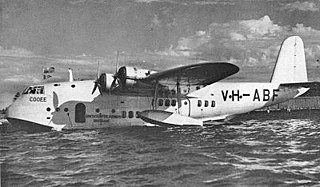
A flying boat is a type of fixed-winged seaplane with a hull, allowing it to land on water. It differs from a floatplane in having a fuselage that is purpose-designed for flotation, while floatplanes rely on fuselage-mounted floats for buoyancy.

Italo Balbo was an Italian fascist politician and Blackshirts' leader who served as Italy's Marshal of the Air Force, Governor-General of Italian Libya and Commander-in-Chief of Italian North Africa. Due to his young age, he was sometimes seen as a possible successor of dictator Benito Mussolini.

A flight is a small military unit within the larger structure of an air force, naval air service, or army air corps; and is usually subordinate to a larger squadron. A military aircraft flight is typically composed of four aircraft, though two to six aircraft may also form an aircraft flight; along with their aircrews and ground staff. In some very specific examples, typically involving historic aircraft, a flight may contain as many as twelve aircraft, as is the case with the Battle of Britain Memorial Flight (BBMF) of the British Royal Air Force (RAF). In most usages, two or more flights make up a squadron. Foreign languages equivalents include escadrille (French), escuadrilla (Spanish), esquadrilha (Portuguese), zveno (Russian), and Schwarm (German).
This is a list of aviation-related events from 1924:
This is a list of aviation-related events from 1928:
This is a list of aviation-related events from 1929:
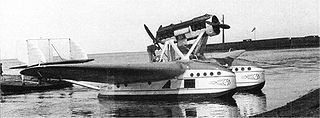
The Savoia-Marchetti S.55 was a double-hulled flying boat produced in Italy, beginning in 1924. Shortly after its introduction, it began setting records for speed, payload, altitude and range.
SIAI-Marchetti was an Italian aircraft manufacturer primarily active during the interwar period.

An airplane, or aeroplane, informally plane, is a fixed-wing aircraft that is propelled forward by thrust from a jet engine, propeller, or rocket engine. Airplanes come in a variety of sizes, shapes, and wing configurations. The broad spectrum of uses for airplanes includes recreation, transportation of goods and people, military, and research. Worldwide, commercial aviation transports more than four billion passengers annually on airliners and transports more than 200 billion tonne-kilometers of cargo annually, which is less than 1% of the world's cargo movement. Most airplanes are flown by a pilot on board the aircraft, but some are designed to be remotely or computer-controlled such as drones.
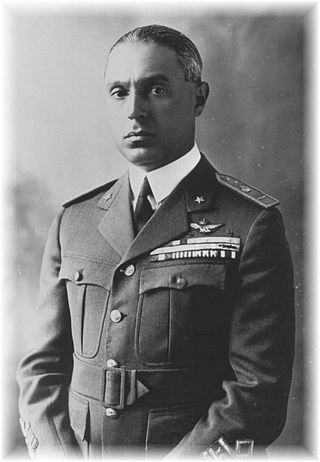
Francesco de Pinedo was a famous Italian aviator. A Regia Marina officer who transferred to the Regia Aeronautica, he was an advocate of the seaplane and is best known for his long-range flying boat flights in the 1920s that demonstrated the feasibility of global air travel.
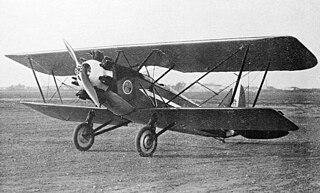
The Breda Ba.19 was an Italian single-seat aerobatic biplane aircraft developed as an air force trainer in 1928.

In aviation, V-speeds are standard terms used to define airspeeds important or useful to the operation of all aircraft. These speeds are derived from data obtained by aircraft designers and manufacturers during flight testing for aircraft type-certification. Using them is considered a best practice to maximize aviation safety, aircraft performance, or both.

The CANT Z.1012 was a small three-engined monoplane built in Italy in the late 1930s to carry either three or five passengers depending on the engines. A small number were built for Italian diplomatic use.
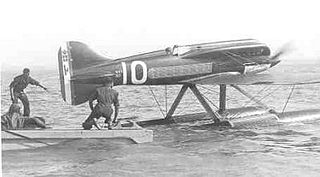
The Macchi M.67, was an Italian racing seaplane designed by Mario Castoldi and built by Macchi for the 1929 Schneider Trophy race.

The United States capital, Washington, D.C., has been the site of several events in the nation's history of aviation, beginning from the time of the American Civil War, often for the purpose of promoting the adoption of new aeronautical technologies by the government. It has also been home to several aircraft manufacturers and aviation organizations, and many aerospace contractors have maintained a presence there as well.
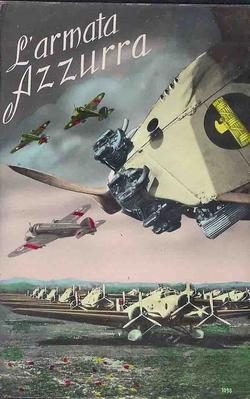
L'Armata Azzurra is a 1932 Italian aviation docu-drama and adventure film directed by Gennaro Righelli and starring Germana Paolieri and Ennio Cerlesi. It was Italy's first aviation drama film, with a fictional story that celebrated the Italian Air Force.

The Decennial Air Cruise was a mass transatlantic flight from Orbetello, Italy, to the Century of Progress International Exposition, Chicago, Illinois. The expedition, organized by the Italian Regia Aeronautica, began on July 1, 1933, and ended on August 12 of the same year. It consisted of 25 Savoia-Marchetti S.55X seaplanes crossing the Atlantic Ocean in formation, forming the greatest mass flight in aviation history. The Italian Squadrons, led by General Italo Balbo, were welcomed enthusiastically in the Netherlands, the UK, Iceland, Canada and particularly in the United States of America, where they became known as the Italian Air Armada. A publicity success for Fascist Italy, Balbo further viewed the expedition as a pioneering step towards commercial flights across the Atlantic.
Atlantic Flight is a 1931 short documentary film made by the Regia Aeronautica Italiana, based on the pioneering 1930 transatlantic formation flight made by 12 Savoia-Marchetti S.55 flying boats, commanded by General Italo Balbo. Atlantic Flight is notable as the first Italian aviation film.
References
- ↑ "Another Triumph for Hiduminium" (advert). Flight . 14 September 1933.
- ↑ Boyne, Walter J. (2002). Air warfare: an international encyclopedia, Volume 1. ABC-CLIO. p. 63. ISBN 978-1-57607-345-2.
- ↑ Lewin, Ronald (1980). Ultra Goes to War . New York: Pocket Books. pp. 86. ISBN 9780671828448.
- ↑ Jablonski, Edward (1971). "Airwar". 1. Manhattan: Doubleday: 119.
{{cite journal}}: Cite journal requires|journal=(help) - ↑ Robinson, Anthony (1979). The Illustrated Encyclopedia of Aviation. London: Marshall Cavendish. p. 848.